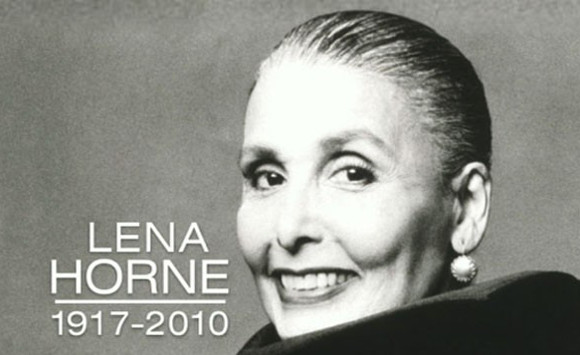
Lena Horne was notable twentieth century woman associated with American entertainment industry and Civil Rights Movement. Before moving to Hollywood she became a nightclub performer at the age of sixteen. She was once blacklisted for her politically controversial role in the Red Scare.
Lena Mary Calhoun Horne was born on June 30, 1917 in Bedford–Stuyvesant, Brooklyn. She is supposedly descended from the John C. Calhoun family. Her family is a mixture of European American, Native American, and African-American who belonged to middle-upper-class stature in the society. Her father was involved in gambling business and when she was three years old, he left his family. Horne’s mother was an actress with a black theatre troupe and traveled extensively, thus she was mainly raised by her grandparents. She was sent to live in Georgia at the age of five.
After many years of travel with her mother, she lived with her uncle, Frank S. Horne, for two years. Upon their return to New York from Atlanta, Horne attended Girls High School in Brooklyn. Before earning her diploma certificate, she dropped out of the school. Later she moved in with her father in Pittsburg as she turned eighteen. She stepped into entertainment industry in 1933, and joined the chorus line of the Cotton Club. Afterwards, she recorded her first record release after joining Noble Sissle’s Orchestra. Subsequent to her separation from her first husband, Horne went on a tour with Charlie Barnet. Growing tired of frequent travel, she left the band. NBC featured her on popular jazz series The Chamber Music Society of Lower Basin Street as a lead vocalist.
Moreover, Lena made appearance in a few musicals as well. The low-budget musical, The Duke is Tops was released in 1938. In 1942, she signed a long-term contract with a major Hollywood studio, Metro-Goldwyn-Mayer. She also worked in a popular radio series Suspense, playing the role of a nightclub singer. Her debut with MGM studio was in Panama Hattie (1942). Also she performed the title song of Stormy Weather. The film was loosely based on the life of Adelaide Hall (1943). Her other popular works include the musical, Cabin in the Sky. However, she was never offered the lead role because of strong racial discrimination still existing at the core of America. In fact, the films were twice edited because some of the states were against black artists on screen. Therefore, most of Lena’s appearances in the films were stand-alone sequences that sometimes seemed detached from the film entirely. One of the scenes featuring Horne taking a bubble bath and signing “Ain’t it the Truth” was removed from the movie as the film executives called it too “risqué”.
Despite the extreme racial discrimination against blacks, Lena managed to be elected to serve on the Screen Actors Guild board of directors, which was a milestone for her. The Hollywood blacklisted her for her strong political views in 1950s. By then Horne was disappointed in Hollywood for its hypocrisy and unfair treatment of black artists. Thus she decided to head back to her nightclub career. She became one of the premier nightclub performers. In 1957, she released a live-recorded album, Lena Horne at the Waldorf-Astoria, which was received raving reviews and response from the listeners. The album became the biggest selling record by a female artist. Furthermore, Lena Horne was nominated for a Tony Award for “Best Actress in a Musical” as well.
